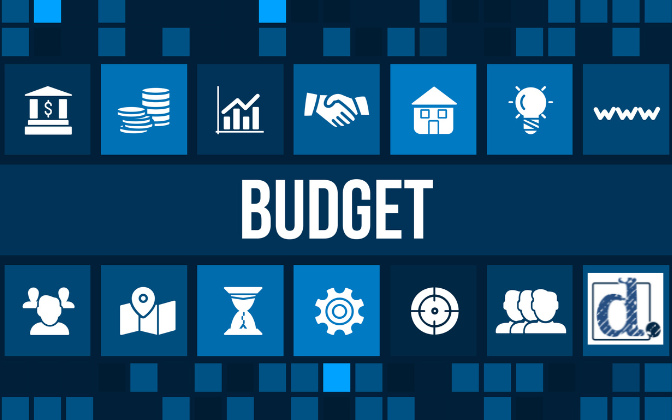
Developing a strategic marketing budget isn’t just nice to have – it’s a strategic imperative. Whether selling entry-level homes, luxury estates or master-planned communities, a company’s marketing spend directly influences how that brand reaches buyers, generates leads and maintains market relevance.
A well-structured marketing budget provides direction, ensures accountability and drives measurable results. As the housing industry adapts to evolving buyer behaviors and digital innovation, so too must the marketing strategy and spend.
How Much Should Home Builders Allocate for Marketing?
According to industry benchmarks, most home builders allocate 1-2% of overall sales volume to marketing. For builders launching new communities or entering new markets, this may increase to 3% or more, especially if brand awareness needs a boost. For builders aiming to grow, gain market share or outpace the competition, a more aggressive investment – particularly in digital marketing – is often necessary. Marketing should be viewed as a growth driver, not a cost center.
Key Considerations for Building a Home Builder Marketing Budget
1. Define Clear Marketing Goals
Marketing goals should align with overarching business objectives. These may include driving traffic to inventory homes, building a VIP list for an upcoming phase or expanding visibility in new territories. Clear objectives help guide budget allocations and define success metrics. Whether the aim is to generate leads, enhance brand reputation or increase organic reach, investment should match intended outcomes.
2. Analyze Past Performance
Historical performance data offers valuable insight. Identifying which tactics underperformed – and which exceeded expectations – helps guide smarter decisions for the upcoming year. Reviewing metrics across email, social, paid media, website engagement and lead-to-sale conversions reveals opportunities for reallocation or improvement.
3. Know Industry Benchmarks & Trends
Understanding how peers approach budgeting provides context and direction. In 2025, high-performing builders continue to:
- Prioritize video marketing and short-form content to engage modern buyers.
- Invest in SEO and content strategy to increase organic lead flow.
- Adopt AI and marketing automation tools to improve efficiency and targeting.
- Balance brand-building efforts with performance-driven lead generation.
- Invest heavily in digital tactics including organic and paid social media, OTT ads and pay per click.
4. Distribute Strategically Across Channels
A strong marketing mix supports both short-term lead capture and long-term brand visibility. Allocating budget according to performance and strategic priority maximizes results. A typical channel distribution might include:
- Digital Advertising (PPC, display, retargeting) – 30-35%
- Website UX, SEO and Content – 15-20%
- Social Media (organic and paid) – 10-15%
- Email Marketing and Drip Campaigns – 8-10%
- Local Media and Traditional Advertising – 8-10%
- Public Relations and Thought Leadership – 5-7%
- Customer Retention, Referrals and Reviews – 5-7%
- Marketing Tech, CRM and Analytics – 2-5%
- Contingency and Testing – 2-5%\
Allocations should adjust based on community lifecycle stage, target demographics and market conditions.
Additional Must-Haves in a Marketing Budget
Seasonal Strategy
The housing market fluctuates seasonally. Adjusting marketing spend accordingly helps optimize results. Investing more heavily in spring and summer – the busiest seasons for homebuying – while scaling back during slower months supports greater efficiency without compromising visibility.
Competitive Analysis
Staying aware of competitor activity is essential. Builders using drone footage, collaborating with influencers or executing hyper-local campaigns may influence buyer expectations. Competitive analysis helps ensure marketing strategies remain compelling and relevant.
Budget Flexibility
Allocating 2% to 5% of the total budget for contingency allows for flexibility when new opportunities or technologies arise. Whether testing a new platform, responding to unexpected media coverage or accelerating a campaign launch, having adaptable funds supports quick, strategic pivots.
Technology and Tools
Modern marketing depends on data and automation. Budgeting for technology – including CRM systems, marketing automation software and analytics tools – enhances performance and streamlines execution.
Professional Support
Engaging a home builder marketing agency with residential construction expertise brings both strategic insight and tactical support. Agencies offer scalability, creativity and industry experience that can accelerate performance across all channels.
The Bottom Line
Marketing budgets for home builders must remain flexible, strategic and results-driven. A well-designed budget informs tactical decisions, optimizes spend and supports measurable success. As the homebuilding industry continues to evolve, the marketing approach – and budget – must evolve with it.
Denim Marketing is a home builder marketing agency that generates qualified leads, builds brand equity and moves homes. From refining budgets to executing campaigns, our team supports results-driven strategies built for today’s marketing.
Need help developing a comprehensive marketing budget? Contact Denim Marketing at 770-383-3360 or fill out our online form to connect with our team.
Leave a Reply